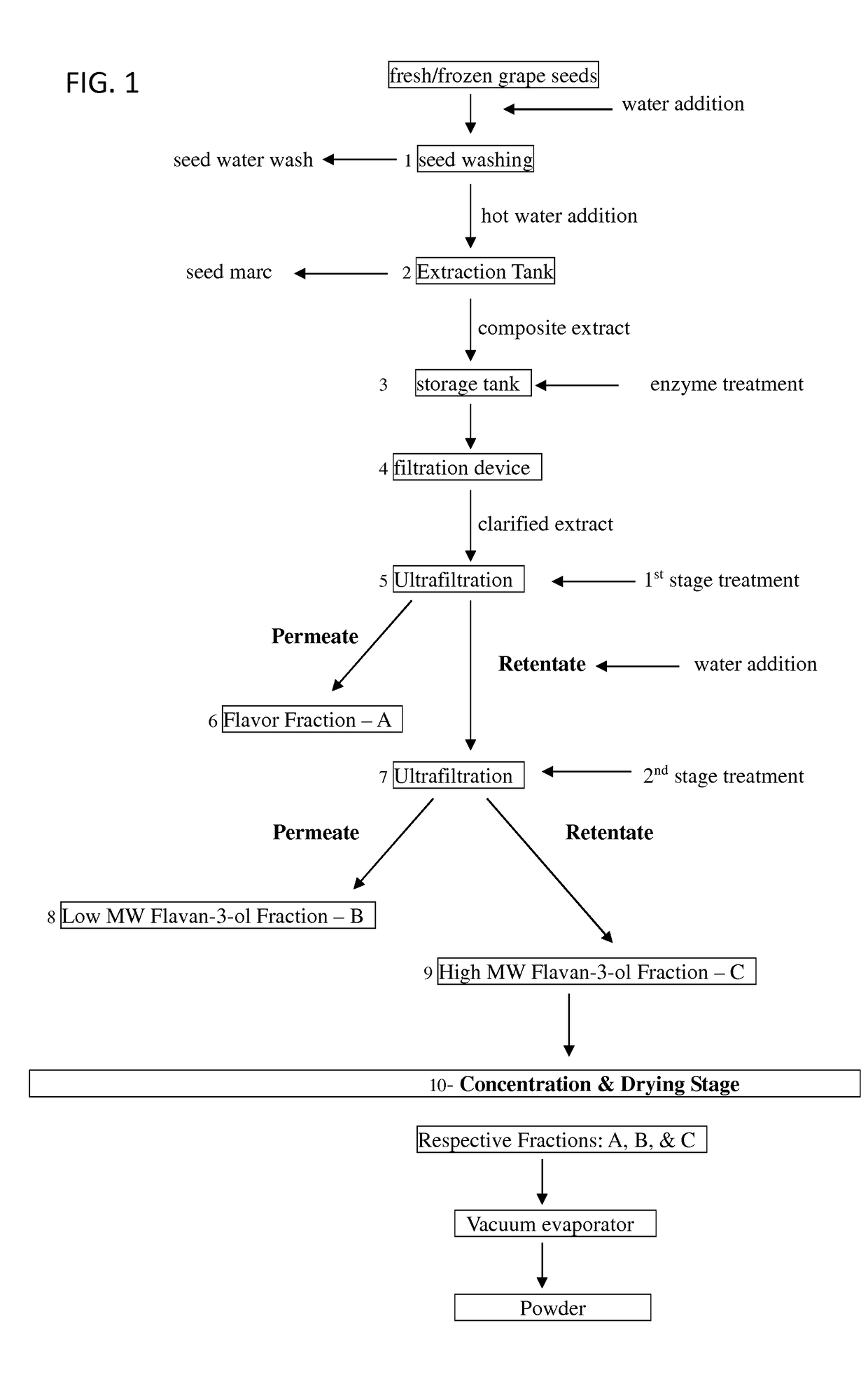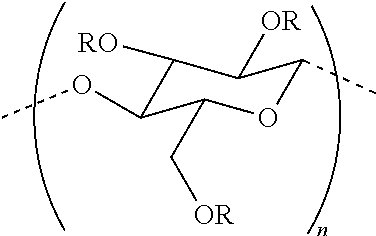Chardonnay grape seed extract
- Summary
- Abstract
- Description
- Claims
- Application Information
AI Technical Summary
Benefits of technology
Problems solved by technology
Method used
Image
Examples
example 1
Extraction Method
[0070]A particular non-limiting embodiment of the extraction process is shown in FIG. 1. Chardonnay grape seeds 1 (fresh, frozen or dried) are washed at step (1) with potable room temperature water. Various weight ratios of water to grape seeds can be used, for example a ratio of 2:1 to 10:1, but the illustrated example uses a 5:1 ratio [weight:weight] of water to grape seeds which are washed with continuous mixing for 15 minutes. This process is repeated at least two times or more, preferably three times and up to four times. In some examples the water, for example the water of the first wash, is neutralized by addition of a base to reduce extraction of polyphenols into the wash while enhancing extraction of sugars into the wash. In a particular example, the water is neutralized by addition of sodium bicarbonate, such as 0.1% sodium bicarbonate, to the water. Each wash, containing mostly sugars, lipids, and some organic acids, is discarded.
[0071]The washed seeds ar...
example 2
Analytical Results
[0078]Whole Chardonnay seeds (fresh grape seeds typically contain 40-50% water) and Fractions A, B and C (produced as described in Example 1 using ultrafiltration membranes having a maximum cut off 5 kD for the first and 500 kD for the second ultrafiltration membrane) were analyzed for nutritional content and for polyphenols (gallic acid equivalents [GAE]) by a modified method of Folin-Ciocalteu (Singleton and Rossi, Am J Enol Vitic 16:144-158, 1965). As shown in Table 1, Fraction A is almost completely sugar, 90% of which is fructose and glucose. Fraction B is comprised of mainly low molecular weight polyphenols such as monomeric and dimeric flavanols (see Tables 2 and 3 below) along with a small amount of fiber. Fraction C is comprised of flavanol oligomers and polymers (tannins) as described in Tables 2 and 3 below and is enriched in fiber content. Importantly, Fractions B and C contain extremely low levels of lipid (<1%) whereas the average lipid value of comme...
example 3
Washing Step
[0082]This example illustrates a beneficial effect of seed washing on polyphenol yield prior to ultrafiltration. Although seed washing is shown to improve phenolic recovery at lower extraction temperatures, the washing step is not an essential component of the method disclosed in Example 1. The washing step instead confers an additional benefit on the separation method separately described in Example 1, and the washing step should therefore not be considered a requirement of the method.
[0083]Although the primary goal of the disclosed extraction process is aimed at separating different components of the grape seed for use in different applications, improved yield efficiencies (for both weight and polyphenols) are helpful to achieve better commercial viability. As described above, existing processes often include harsh solvents and / or high extraction temperatures to maximize extraction yields but these conditions are undesirable for a variety of reasons. In particular rega...
PUM
 Login to View More
Login to View More Abstract
Description
Claims
Application Information
 Login to View More
Login to View More - R&D
- Intellectual Property
- Life Sciences
- Materials
- Tech Scout
- Unparalleled Data Quality
- Higher Quality Content
- 60% Fewer Hallucinations
Browse by: Latest US Patents, China's latest patents, Technical Efficacy Thesaurus, Application Domain, Technology Topic, Popular Technical Reports.
© 2025 PatSnap. All rights reserved.Legal|Privacy policy|Modern Slavery Act Transparency Statement|Sitemap|About US| Contact US: help@patsnap.com


